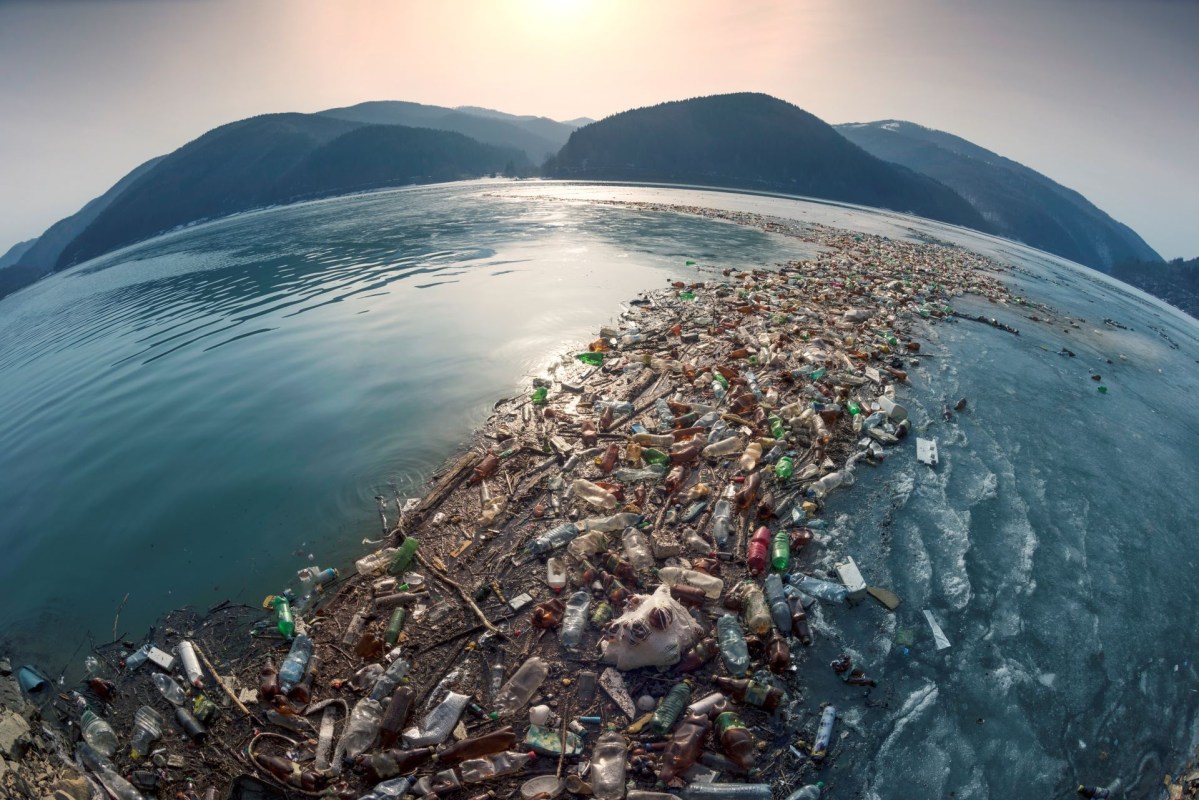Discarded plastic in the ocean has been a major environmental issue for decades.
The Great Pacific Garbage Patch — a collection of floating plastic debris — has become famous as an example of the damage human carelessness can do to the environment.
Now, a study released earlier this month has determined that the problem is bigger than we ever guessed: There are 170 trillion pieces of plastic in the ocean, the Washington Post reports. That's about 21,000 pieces of plastic for every person on the planet.
What's happening?
The study was conducted by an international team of researchers over the course of 40 years using 12,000 samples, the Post reports. Researchers saw a rise in plastic particles starting in 2004 and say that plastic pollution is now doubling every six years.
In total, it adds up to an estimated 2.6 million tons of plastic floating in the ocean.
Most of the pieces are "microplastics," tiny fragments of plastic that are extremely difficult to remove from the water. They are found in environments all over the world and even inside our bodies.
"The plastic pollution, it's in every biome," Marcus Eriksen, the study's lead author, told the Post. "It's not just in oceans anymore."
Why is plastic pollution an issue?
Plastic pollution in the ocean affects a wide range of sea creatures, as well as the billions of humans that rely on the ocean for food and transportation.
Researchers do not yet know all the health effects of microplastics, but larger plastic objects like "nurdles" (plastic beads used in manufacturing) can poison and kill fish and other ocean creatures, and even larger trash, like six-pack rings, ensnares and injures animals. Altogether, these form what researchers call a "plastic smog" that is damaging the planet and harming human health.
Plastic in the ocean also won't go away on its own. This durable material takes hundreds of years to break down in nature. Scientists are working on innovative ways to clean up the ocean and filter microplastics from water. However, even once the plastic is removed from the ocean, it's difficult to recycle or dispose of safely.
What can be done about ocean plastic pollution?
The best hope for the future is to dramatically reduce our use of plastic while continuing to research methods to eliminate the plastic pollution we've already created.
According to the Washington Post, U.N. negotiators hope to complete an international plastics treaty by 2024 to regulate countries' production and disposal of this problematic material.
Meanwhile, individuals can help by avoiding disposable plastic products and instead using durable items such as reusable water bottles. You can also look for bulk products like fresh produce that use as little plastic packaging as possible instead of choosing individually-wrapped items.
Join our free newsletter for cool news and cool tips that make it easy to help yourself while helping the planet.









